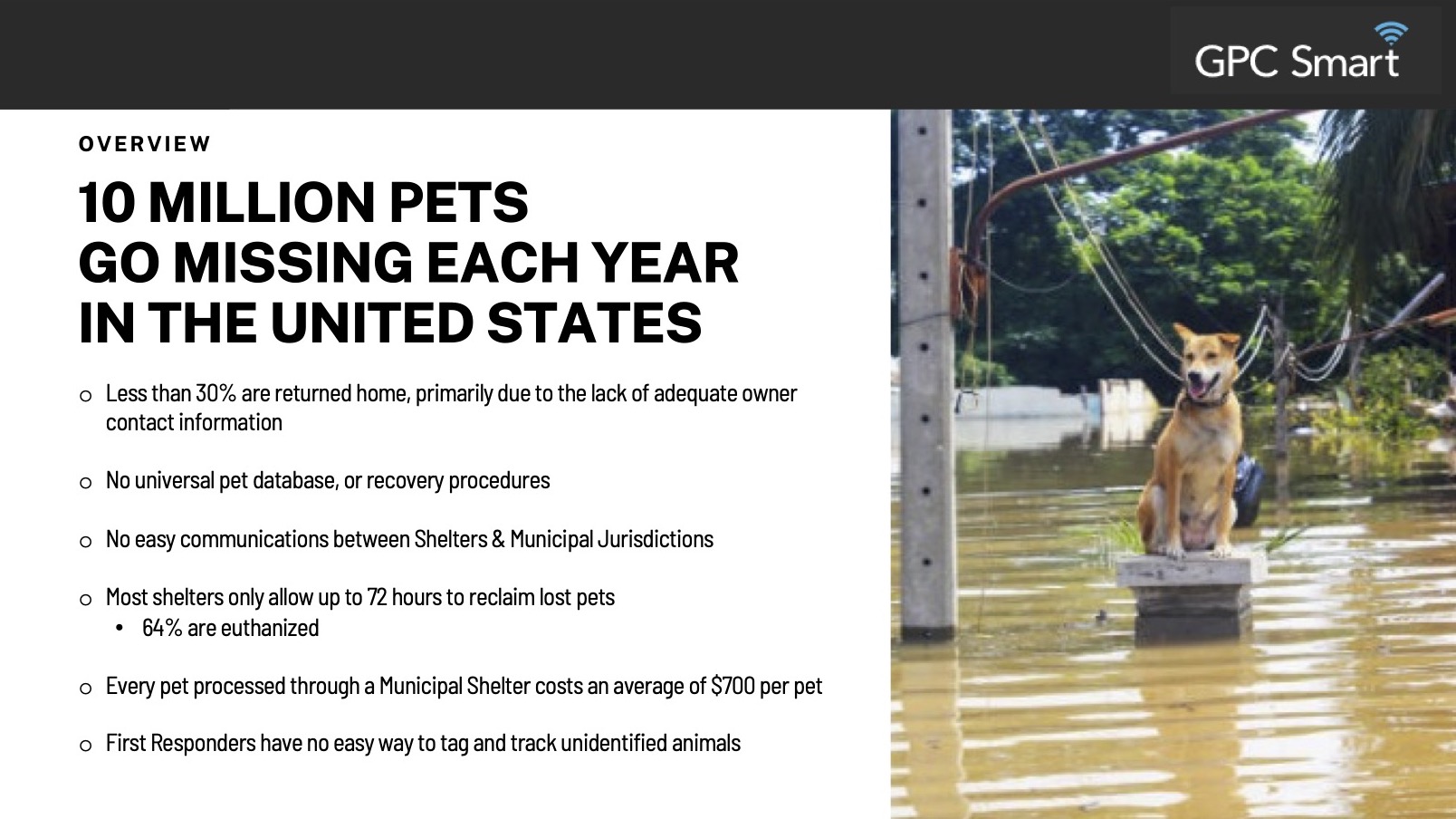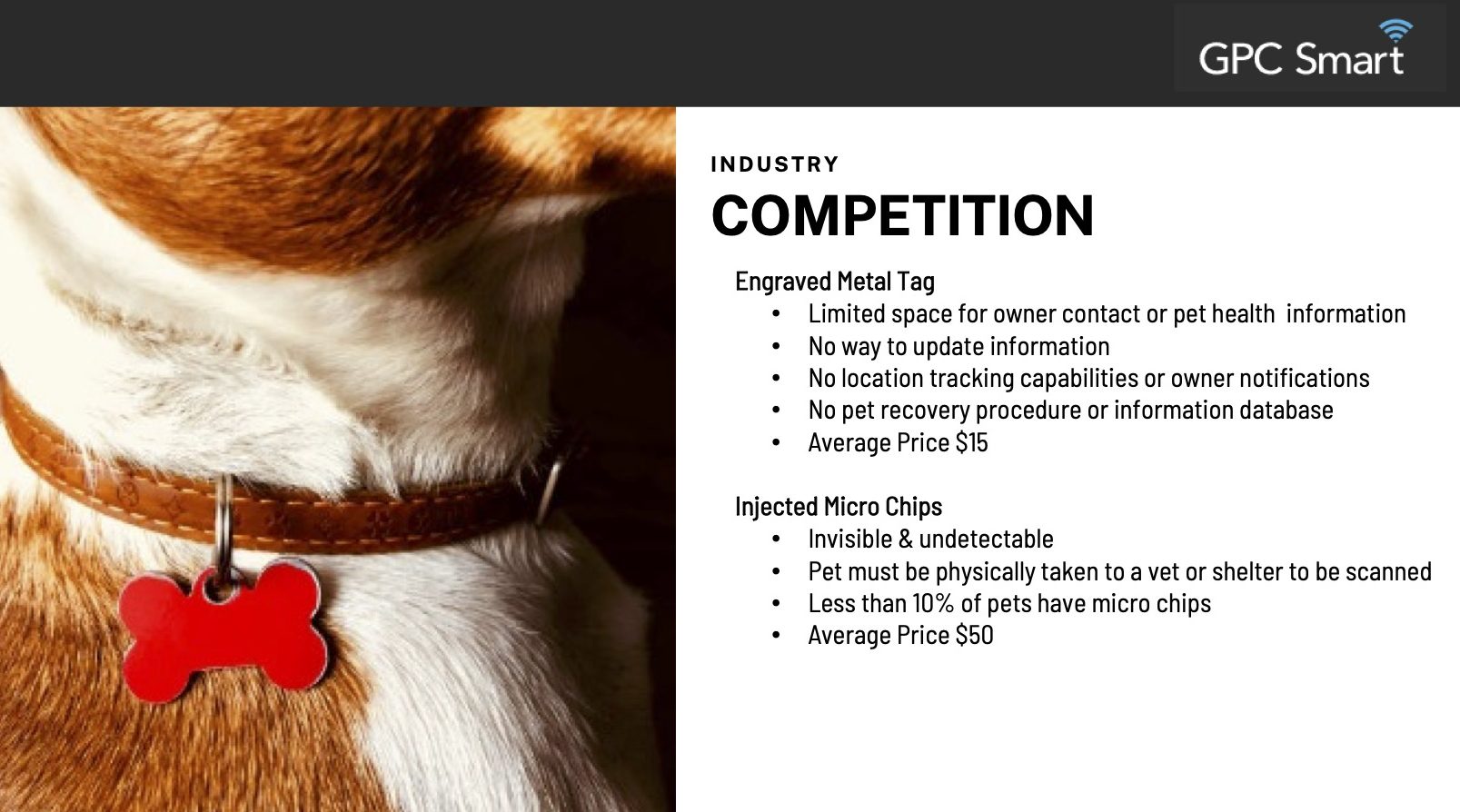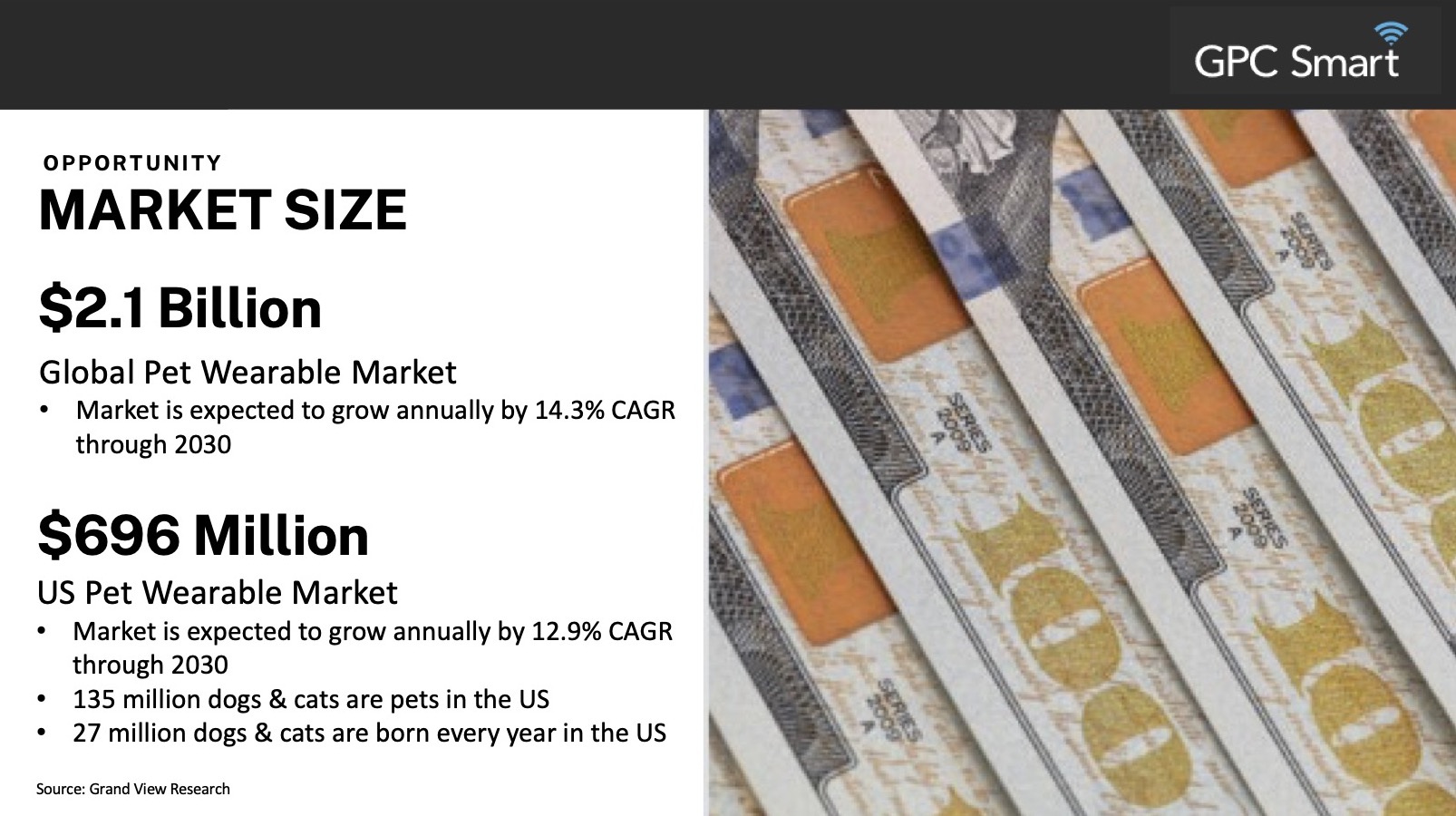Syneroid’s $500K deck • TechCrunch
Syneroid has recently been raised A $500,000 round of funding was raised to bring something between microchips, dog collars, and to the market. Although the company is discovering some interesting segments of the market, the deck leaves much to be desired. We learn more from mistakes than from perfection, so I figured it’d be a great one to dive into for this week’s pitch deck teardown!
We’re looking for more unique pitch decks to tear down, so if you want to submit your own, here’s how you can do that.
Slides in this deck
Throughout this pitch deck teardown, you’ll see the company referred to as Syneroid and GPC Smart — the company’s official name is the former, but the brand they are using for the pitch deck and its products is the latter. According to the company, it raised this round at $3.9 million.
The pitch was made using a 12-slide deck. No information was redacted or omitted.
- Cover slide
- Problem slide
- The slide of competition
- Slide Solution
- Slideshow on Competitive Advantages
- Slide History/Traction
- Slide to market size
- Slide about go-to markets/target markets
- Team slide
- Operational financials slide
- Ask slide
- Contact slide
Three things to love
Syneroid is entering a market that’s very easy to understand: Lost animals are something that most of us have an experience with in one way or another. That’s an advantage in that you don’t have to explain the market in detail. The company faces a wall of potential competition while trying to gain traction. That’s a challenge, and it’s interesting to see how Syneroid is tackling it.
Resolve the gap between what you perceive and what you actually are

[Slide 2] Investors are quickly brought up to speed by the overview slide. Credits for the image: GPC Smart Tags
Because the company is throwing itself into a market that is relatively well understood, its challenge isn’t to explain what it is doing but how it is moving the market forward. The company’s second slide is labeled an “overview” slide, which rapidly helps get a picture of the overall challenge this particular market segment is facing.
Investors are likely to know at least some of these things, but these bullets help smoothen the gap between their preconceived notions and actual facts. Perception The market and the Realities of being in this market. This slide — while fairly wordy — does a really good job of ironing out any misunderstandings an investor may have.
It also raises some important questions. It’s not just about lost pets. The collars of stolen animals will be removed. Animals that are lost may also have their collars removed. Syneroid doesn’t really address either scenario.
Great competition overview
It’s pretty rare to see a startup put its competitor overview front and center, but I think that was a really shrewd move in this case. This is not a deep tech move or a market obscured by mystery. I think most investors would be able find the two main competitors. Although it seems a bit defensive to tackle this head-on, given the market, it makes sense. Here’s how the company addressed it:

[Slide 3] Although it’s unusual to tackle competitive alternatives in this manner early in a slidedeck, it is probably a good decision in this case. Image credit: GPC Smart Tags
There are many competitors in this market, including those with engraved metal tags and injected microchips. Each has its own pros and cons. There’s also the latest generation of GPS-enabled dog collars, such as the ones from Fi, Whistle, Fitbark and others, which aren’t addressed in this competitive landscape.
If the animal is stolen, the thief will simply discard the collar, and at that point, it doesn’t really matter what’s on the collar.
This slide illustrates the competitive landscape. It’s great that the company decided to address this issue upfront. I think it’s important, and it’s a great way to get out ahead of the most obvious pushback from investors.
Its presence, like the one before, raises questions. I think an NFC/QR code dog collar is interesting, but I’m struggling to see how they are inherently better than standard engraved tags. The exact laser-engraved tag in the photo doesn’t cost $15, as listed on the slide, but can be ordered from Amazon — fully personalized — for $4, with four lines of text on each side of the metal tag.
Sure, you can’t “update” the information, but pet owners are probably able to afford the $4 every time they move or change their phone numbers. You can’t include location information, but someone who is willing to catch a stray pup is probably able to text or call the owner with an address and details. Again, if the animal is stolen, the thief will simply discard the collar altogether, and at that point, it doesn’t really matter what’s on the collar. As far as tracking goes, an Apple AirTag might be a good solution for those situations (but it’s as easy to throw an AirTag into the bushes as any other collar).
This slide shows that founders are aware of the challenges they face in messaging and positioning. However, it also shows that their answers are still in flux.
A market that is huge
The global pet market is huge, both in the U.S. as well as globally. Investors know that, but adding a reminder can’t hurt. You don’t have to capture This is a big deal You will need to have a significant market share in order to establish a business.

[Slide 7] Market size! Credits for the image: GPC Smart Tags
A huge and growing market is something investors love more than any other thing. Wearable pets are definitely a part of that market, and I feel that smart wearables, particularly GPS-type trackers, will be a major value driver. GPC is likely to find a niche if it plays its cards right and finds a strong market. This product will appeal to people who are looking for something more than an engraved tag, but also something simpler or cheaper than a GPS tracker.
The slide below shows the market’s overall size, which I find amazing. However, it would be even more interesting if the company spoke about its market and what it plans to do with those customers.
What can a startup take away from this slide? Get clear on the size of your market and demonstrate that it is large and moving toward growth.
In the rest of this teardown, we’ll take a look at three things Syneroid could have improved or done differently, along with its full pitch deck!